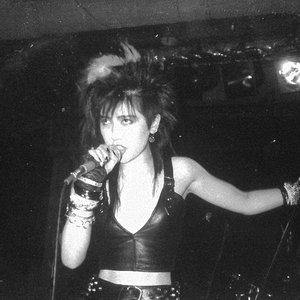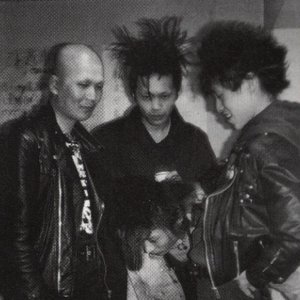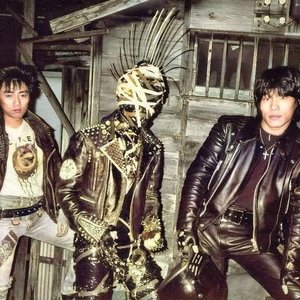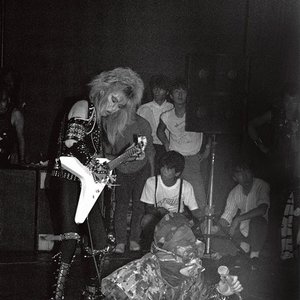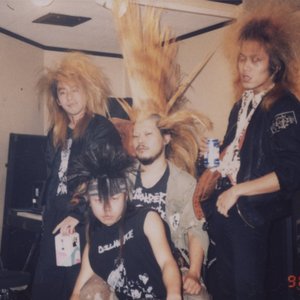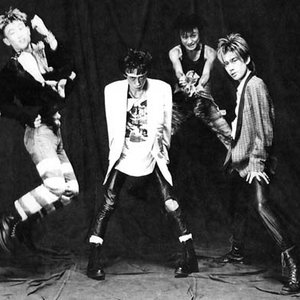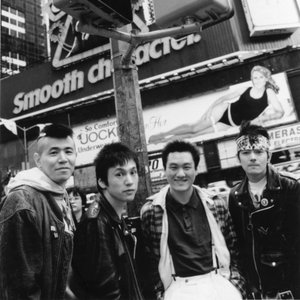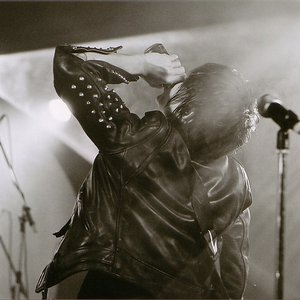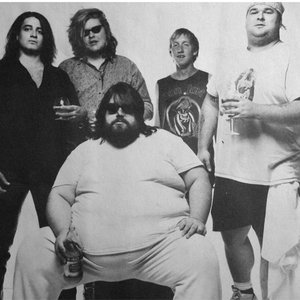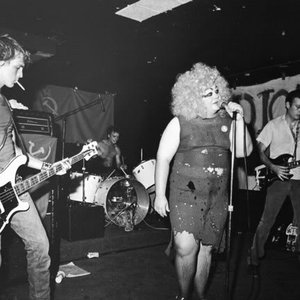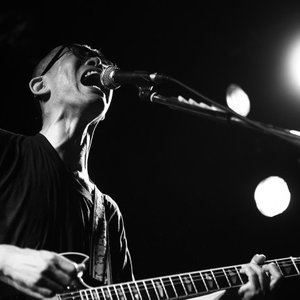Biography
-
Years Active
1980 – 1985 (4 years)
-
Founded In
Nishitōkyō, Tokyo, Japan
-
Members
- 乾純 (1980 – 1985)
- 尾形テルヤ (1985 – 1985)
- 斉藤律
- 杉山晋太郎 (1980 – 1983)
- 遠藤ミチロウ
The Stalin was a punk rock band of the early 80's.
Former leader and the only constant member of the band was Michiro Endo - 遠藤ミチロウ, born November 15, 1950, a socialist activist.
According to Michiro, the name Stalin is hated by many Japanese, so he thought it was a good name to create the image he wanted for his band. He further explained that because of his socialist stance, the band name encapsulated the downside of every good idea.
Michirou was the editor of the INGO fanzine. The magazine was primarily responsible for the 2nd press of the Dendou Kokeshi single which was first released at the 05th of May in 1980. The cover of the EP featured a brutal drawing of a penis being injected by a hypodermic needle. The great raw and jangly punk sound was continued throughout the Stalinism EP released in 1981. On the 5-track-record you can pick out at least one guitar riff inspired by the Ramones skilfully blended into the unique sound of The Stalin.
Michirou's live performances were violent. Often, if he was unsatisfied with the reaction of the audience during a live show he would start to behave aggressively. From the beginning of concerts he frequently spat, pulled out hair and even beat up members of the audience to create mayhem. If this unconventional approach did not work, he would leave the stage after just one song. It is no wonder that within a very short space of time The Stalin were banned from performing at most venues.
After the release of the band's first LP, titled Trash, on 24 October 1981, The Stalin changed their musical direction from their familiar punk rock style to hardcore punk. The reason for this change was initiated by the recruitment of guitarist Tam (ex. Typhus). Trash is more than just an important document of Japanese punk rock; it is also a very rare one. Even in Japan itself only bootleg versions of the album are available.
After the release of their first LP, The Stalin decided to sign a contract with the Climax label (sub-label of Tokuma Records). The band duly went on to record their major-debut LP. Stop Jap was released on the 1st July in 1982 and is arguably The Stalin's best work. The records lyrics are based on political, anti-nationalistic and anarchistic statements. On the B-sides of the album singles (Romanticist/Allergy) you can find cover-versions of The Doors (Light My Fire) and The Stooges (No Fun).
In 1982, The Stalin appeared in the landmark movie Burst City/Bakuretsu Toshi directed by Sogo Isshi. The director of the film, Sogo Ishii, went on to create the music video for Stop Jap, which was subsequently the band's next 7" single release. Sogo Ishii's involvement with the band is especially significant as he is famous in the world of 8mm film-art.
Chicken Farm was the first song by The Stalin which reached an international audience. The song was released on the infamous Welcome to 1984 compilation of Maximum Rock N Roll Records. The record contained many international pioneers of hardcore punk including Raw Power and BGK.
At the end of 1983, Tam left The Stalin to form Gauze a hardcore band. Tam's departure had a big influence on the band and The Stalin's next album, Fish Inn, which was written in a jazzy style, was very badly received by the Japanese punk generation. Michirou was incredibly disappointed and disillusioned with the negative reception of the ill-fated Fish Inn and in reply released Last Live for Never LP before The Stalin announced their disbandment.
In reflection, Michirou Endou explained that he always wished that The Stalin would have received more attention from the public and he hoped in turn that they would open their eyes to his lyrics. His poetic and lyrical style of writing was called by himself tanku, a mix between tanka and haiku (stylised Japanese poetry).
Even though The Stalin had ceased activities, Last Live for Never was not the band's final release as director Sogo Ishii appeared again. He captured the boundless energy and the soul of the bands live performance in dark, mysterious and intense pictures and made them into a movie. The focus of the video was of course the charismatic yet enigmatic vocalist Michirou Endou. The VHS was released with the live two-disc (vinyl)-compilation The Stalin for Never.
Inspired by the monumental events of 1988, especially the dissolution of the Soviet Union, Endou revived THE STALIN (albeit with new members) with the new name simply, STALIN.
He had been fascinated with the C.I.A. backed Polish syndicate Solidarity, which began the same year as THE STALIN, and after a visit to Warsaw he organized a Japanese tour for the Polish punk band Dezerter. STALIN completed the cultural exchange in 1990 when they toured Eastern Europe, which was recorded and released as the Saigo no Akai Natsu -Stalin Call in East Europe- video. They had a couple line-up changes and released six singles, four studio albums and one live album, before calling it quits in 1993.
Artist descriptions on Last.fm are editable by everyone. Feel free to contribute!
All user-contributed text on this page is available under the Creative Commons Attribution-ShareAlike License; additional terms may apply.

